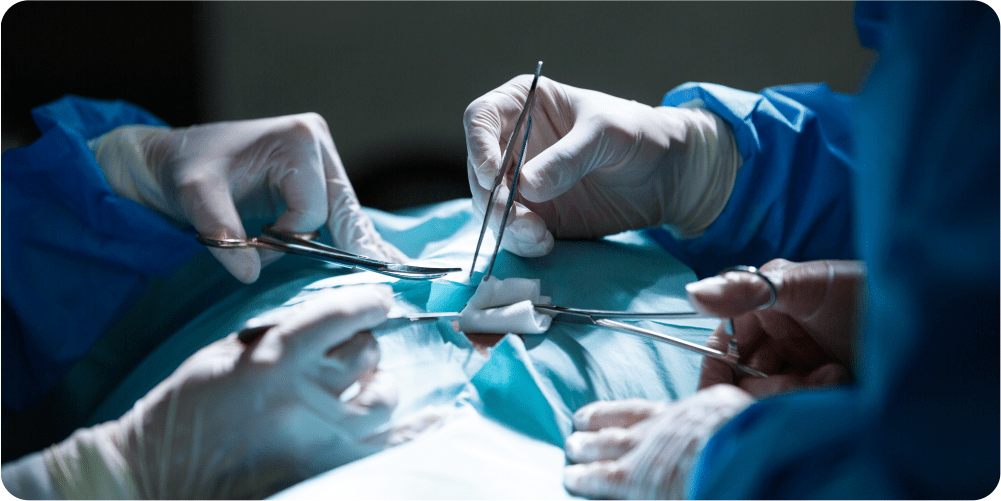
Electrosurgery
Electrosurgery is a method used frequently in dermatologic surgery to provide superficial or deep coagulation or skin cutting. The conductivity of electrical energy via the skin is poor. As a result, this energy increases and is transformed into heat. Electrosurgery can result in desiccation, coagulation, or sectioning of the skin, depending on the waveform used.
How does it function?
An electrosurgical unit, often known as a generator or an ESU, is the main component of an electrosurgical system. The dispersive electrode, also known as the grounding pad, the patient, the active electrode, and (when required) the dispersive electrode. The generator accelerates the current by drawing it from the outlet. At this frequency, heat is produced at the cellular level without affecting muscles or nerves. 2 The cutting and coagulation effects are brought on by the heat generated.
Read MoreElectrosurgery
Electrosurgery is a method used frequently in dermatologic surgery to provide superficial or deep coagulation or skin cutting. The conductivity of electrical energy via the skin is poor. As a result, this energy increases and is transformed into heat. Electrosurgery can result in desiccation, coagulation, or sectioning of the skin, depending on the waveform used.
How does it function?
An electrosurgical unit, often known as a generator or an ESU, is the main component of an electrosurgical system. The dispersive electrode, also known as the grounding pad, the patient, the active electrode, and (when required) the dispersive electrode. The generator accelerates the current by drawing it from the outlet. At this frequency, heat is produced at the cellular level without affecting muscles or nerves. 2 The cutting and coagulation effects are brought on by the heat generated.
During electrosurgery, tissue is sliced or coagulated using a high-frequency electrical current produced by an electrosurgical unit, or ESU. In order to make precise cuts or cause tissue to coagulate, which lowers the risk of bleeding, an electrical current passes through a connected device (active electrode). Physicians can modify the unit output setting for a range of procedures by changing the technique, mode, and power settings (wattage).
Indications
Depending on the clinical condition, a certain electrosurgery mode will be used. Electrodesiccation is a suitable option if only the epidermis needs to be treated because it leaves little to no scarring behind. Electrodesiccation dehydrates the treated skin, resulting in very superficial tissue damage. It is a high-voltage, noticeably damped current that is sent by a monoterminal device. A spark forms between the electrode and the skin if the surgeon holds the electrode just slightly away from the skin. The name for this is electrofulguration. As the carbonization on the surface insulates the underlying tissues from the spread of heat, this approach also results in relatively superficial damage. Dermatologists frequently employ these 2 methods.
Acrochordons, actinic keratosis, tiny angiomas, epidermal nevi, seborrheic keratosis, verruca plana, or hemostasis for capillary bleeding are common dermatologic indications for electrofulguration or electrodesiccation for a superficial skin ablation.
Angiofibromas, basal cell carcinoma, Bowen’s disease, squamous cell carcinoma, ingrown toenail matrixectomy, sebaceous hyperplasia, hemostasis from arterial bleeding, benign adnexal tumours (syringoma, trichoepithelioma), or verruca vulgaris can all be treated with electrocoagulation or deep skin ablation.
The treatment of acne keloidalis nuchae, blepharoplasty incision, rhinophyma repair, scar revision, shave removal (benign skin lesions), skin-flap incisions and undermining, and resurfacing may all include electrosection requiring skin incision or excision. This method is employed for incisions or excisions that are rapid and painless.
The treatment of acne keloidalis nuchae, blepharoplasty incision, rhinophyma repair, scar revision, shave removal (benign skin lesions), skin-flap incisions and undermining, and resurfacing may all include electrosection requiring skin incision or excision. This method is employed for incisions or excisions that are rapid and painless. The quick hemostasis that is provided at the time of incision is the main benefit of electrosection over surgery using a knife. However, using this method will result in a smoke plume that poses safety risks as well as unpleasant odours for the patient.
Contraindications
Electrosurgery in patients with cardiac pacemakers or implantable cardiac defibrillators (ICD) devices is a hotly debated subject, despite not being a strict contraindication. These devices may not operate as intended if electrical energy is flowing during electrosurgery. Skipped beats, the activation of a defibrillator, bradycardia, asystole, or the reprogramming of a pacemaker can result from this. Although the majority of contemporary implantable devices are immune to outside electromagnetic waves, the possibility of interference still exists.
The surgeon should employ brief energy bursts of less than 5 seconds, lower the power settings, prevent reducing current usage, and refrain from treating the region around the cardiac device when operating on patients who have these cardiac devices.
By limiting the current to a very small area, such as when using bipolar forceps, the risk is also reduced. There haven’t been any instances of pacemaker or ICD interference in the dermatological practise, according to reports.
The surgeon should utilise genuine electrocautery in high-risk cardiac patients to almost completely remove risk. Compared to electrosurgery, this has the potential to result in more tissue damage, but in these patients, no current is flowing to cause interference. Additionally, magnets are frequently utilised in electrosurgery to lower the danger associated with implantable devices. The pacemaker will cease paying attention to all electrical signals and pace at a reset rate when a magnet is placed over the device.
What Advantages Does Electrosurgery Offer?
Numerous advantages of electrosurgery include, but are not limited to:
- Reduces application-related bleeding to a minimum
- Enables more accurate cutting and coagulation settings
- Provides a comparatively quick approach for tissue ablation or excision
What Safety Precautions Should Be Taken Into Account When Using Electrosurgery?
Users are required to read and comprehend the operation handbook that is supplied with the equipment, just like with any endoscopic procedure tool. To ensure the security of the patient and the staff, precautions should be considered. The fundamentals of electrosurgery must be thoroughly understood by doctors, and they must be able to modify the device’s settings according to the clinical condition. The doctor should also always think about the electrosurgical tools being used, such as snares, knives, sphincterotomes, and coagulation probes.
(Not a complete list) Additional safety measures to prevent any patient issues with electrosurgery include:
- To avoid any unnecessary current delivery, start at the lowest setting available.
- Avoid using the electrosurgical tool in close proximity to, or in direct contact with, other endoscopic instruments, or with medical implants that support life.
- To distribute energy evenly and prevent any rise in skin temperature under the grounding pad during procedures, it is crucial to set the dispersive electrode (grounding pad) correctly.
- Make sure the patient or user is not in contact with grounded metal items when wearing active accessories.
- To prevent unneeded downtime and user or patient injuries, keep up with equipment preventative maintenance and inspections.
Electrosurgical Devices And Instruments: Types
Typical electrosurgical tools include:
- The electrical current is produced by the electrosurgical machine. The gi4000 Electrosurgery Unit has a touchscreen and gives doctors access to argon plasma, bipolar coag, monopolar, and lavage functions—all of which are suited for flexible endoscopy.
- Sensing and non-sensing dispersion electrodes.
- Active electrodes: Snares, probes, forceps, knives, sphincterotomes, and a variety of other tools are frequently used in GI endoscopic procedures.
The greatest and most reasonably priced Electro Surgeries with the best dermatologists in the business are available at Epicorium!
FAQs
The risks of electrosurgery include electric shock and electrical burns, thermal burns, transmission of infection and production of toxic gases.



